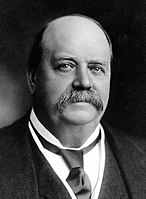
John Christian Watson was an Australian politician who served as the third prime minister of Australia from 27 April to 18 August 1904. He was the inaugural federal leader of the Australian Labor Party (ALP) from 1901 to 1907 and was the first member of the party to serve as prime minister.

Sir George Houston Reid was an Australian and British politician, diplomat and barrister who served as the fourth prime minister of Australia from 1904 to 1905. He held office as the leader of the Free Trade Party, previously serving as the 12th premier of New South Wales from 1894 to 1899, and later as the High Commissioner of Australia to the United Kingdom from 1910 to 1916.
The Free Trade Party, officially known as the Free Trade and Liberal Association, and also referred to as the Revenue Tariff Party in some states, was an Australian political party, formally organised in 1887 in New South Wales, in time for the 1887 New South Wales colonial election, which the party won.
The Protectionist Party, also known as the Protectionist Liberal Party or Liberal Protectionist Party, was an Australian political party, formally organised from 1887 until 1909, with policies centred on protectionism. The party advocated protective tariffs, arguing it would allow Australian industry to grow and provide employment. It had its greatest strength in Victoria and in the rural areas of New South Wales. Its most prominent leaders were Sir Edmund Barton and Alfred Deakin, who were the first and second prime ministers of Australia.
The Liberal Party was a parliamentary party in Australian federal politics between 1909 and 1917. The party was founded under Alfred Deakin's leadership as a merger of the Protectionist Party and Anti-Socialist Party, an event known as the Fusion.

Sir Littleton Ernest Groom KCMG KC was an Australian politician. He held ministerial office under four prime ministers between 1905 and 1925, and subsequently served as Speaker of the House of Representatives from 1926 to 1929.
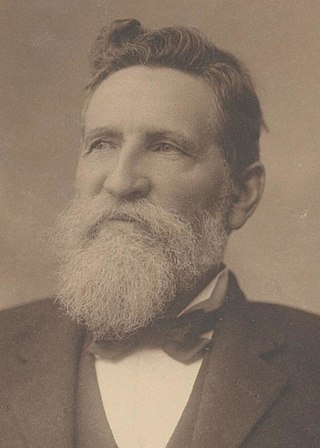
Allan McLean was an Australian politician who served as the 19th Premier of Victoria, in office from 1899 to 1900. He was later elected to federal parliament, where he served as a government minister under George Reid.
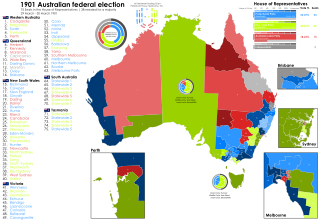
The 1901 Australian federal election for the inaugural Parliament of Australia was held in Australia on Friday 29 March and Saturday 30 March 1901. The elections followed Federation and the establishment of the Commonwealth of Australia on 1 January 1901. All 75 seats in the Australian House of Representatives, six of which were uncontested, as well as all 36 seats in the Australian Senate, were up for election.

The 1903 Australian federal election was held in Australia on 16 December 1903. All 75 seats in the House of Representatives, and 19 of the 36 seats in the Senate were up for election. The incumbent Protectionist Party minority government led by Prime Minister Alfred Deakin retained the most House of Representatives seats of the three parties and retained government with the parliamentary support of the Labour Party led by Chris Watson. The Free Trade Party led by George Reid remained in opposition.

The 1910 Australian federal election was held in Australia on 13 April 1910. All 75 seats in the House of Representatives, and 18 of the 36 seats in the Senate were up for election. The incumbent Liberal Party led by Prime Minister Alfred Deakin was defeated by the opposition Australian Labor Party (ALP) led by Andrew Fisher.
The Western Australian Party was a short-lived Australian political party that operated in 1906. It was intended as a liberal party to protect the rights of Western Australians and to oppose the increasingly successful Labor Party, and drew its supporters from the Protectionist Party and the Anti-Socialist Party. John Forrest, a minister in Alfred Deakin's government, accepted the leadership of the party. Candidates were endorsed for all electorates in the 1906 federal election, including Forrest, but by the time of the election enthusiasm for the venture had diffused. The party elected Forrest in Swan and William Hedges in Fremantle.
This article provides information on candidates who stood for the 1906 Australian federal election. The election was held on 12 December 1906.
This article provides information on candidates who stood for the 1910 Australian federal election. The election was held on 13 April 1910.
The history of the Australian Labor Party has its origins in the Labour parties founded in the 1890s in the Australian colonies prior to federation. Labor tradition ascribes the founding of Queensland Labour to a meeting of striking pastoral workers under a ghost gum tree in Barcaldine, Queensland in 1891. The Balmain, New South Wales branch of the party claims to be the oldest in Australia. Labour as a parliamentary party dates from 1891 in New South Wales and South Australia, 1893 in Queensland, and later in the other colonies.
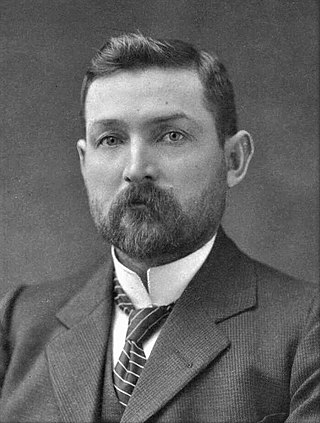
The Watson government was the third federal executive government of the Commonwealth of Australia. It was led by Prime Minister Chris Watson of the Australian Labor Party from 27 April 1904 to 18 August 1904. The Watson government was the first Labor Party national government in both Australia and in the world. Watson was aged just 37 when he became Prime Minister of Australia, and remains the youngest person to have held the post.
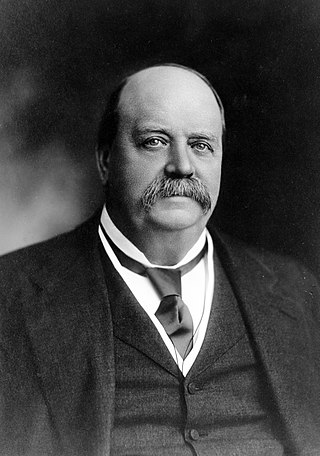
The Reid government refers to the period of federal executive government of Australia led by Prime Minister George Reid. It lasted from 18 August 1904 - 5 July 1905. Reid was the sole Prime Minister of Australia to belong to the Free Trade Party. Allan McLean of the Protectionist Party served as deputy.
The Australian states each elected three members of the Australian Senate at the 1910 federal election to serve a six-year term starting on 1 July 1910.
The Liberal Party, often known simply as the Liberals, was the name used by a number of political groupings and parties in the Victorian Parliament from the late 19th century until around 1917.
The National Liberal Union of Queensland, also referred to simply as the Liberals, was an Australian protectionist organisation that was active in the early 1900s. It endorsed candidates at elections and provided extra-parliamentary support for anti-Labour politics.
This is a list of electoral results for the Australian Senate in Victoria since Federation in 1901.


